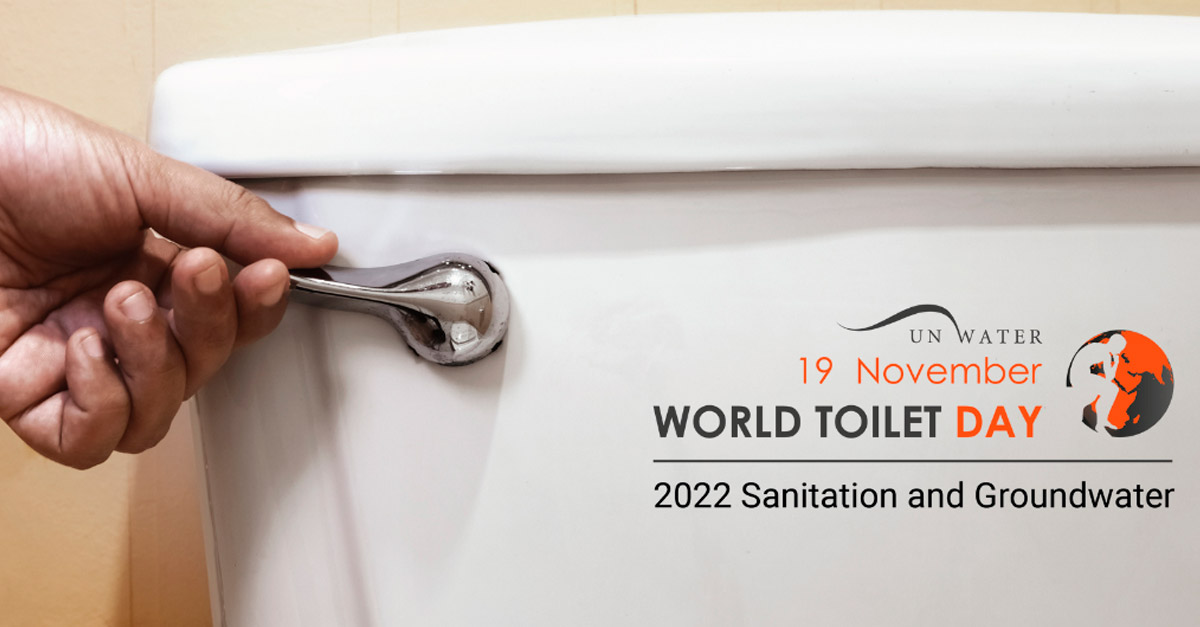
World Toilet Day 2022 – Making the invisible visible
Despite the progress over the past twenty years, sanitation is still one of the Sustainable Development Goals that is furthest out of reach. For this reason, on November 19, Almar Water Solutions mobilizes to make the invisible visible.
Access to sanitation and hygiene services are vital for people’s health. However, the figures for poor water management and quality are alarming. 3.6 billion people do not have access to safely managed sanitation, and each year, nearly half a million children die from water-related diseases. In addition, nearly 8% of the world’s population still practice open defecation, and 9% of wastewater is returned to the ecosystem without being treated or reused.
Access to water and sanitation is not only a necessity; it is a right of every human being. In 2010, the United Nations General Assembly adopted a landmark resolution that considered “the right to safe and clean drinking water and sanitation as a human right that is essential for the full enjoyment of life and all human rights”. In 2015, it also adopted the Right to Sanitation as an independent right.
But why celebrate a world day for the toilet?
Precisely because it all starts with the toilet. It is the starting point of safe and effective sanitation that effectively captures human waste for proper treatment and disposal. An invention that, despite having its origins in the sixteenth century when the first prototypes of toilets emerged, replacing the famous medieval shouts of “Agua va!” (“Look out below!”), has been unable to expand everywhere in the world. There are currently more than 4.2 billion people who do not have toilets with an efficient sanitation system in their homes.
This means that the water that is discharged without any treatment process can contaminate the rivers, beaches or groundwater into which they flow, infect food crops and even spread diseases among the population. Because of the scarcity of water and the lack of drinking water treatment systems, people are forced to turn to contaminated water sources that can cause serious human health problems. In fact, data from the World Health Organization affirm that contaminated water can transmit diseases such as diarrhoea, cholera, typhoid fever, hepatitis A or polio, among others.
On the other hand, previously treated water can be returned to the channels or be reused, thus forming part of the circular economy process and complying with the quality requirements required for efficient and reliable water use. A sanitation system that, when managed safely, protects groundwater from contamination by human waste. For this reason, the link between sanitation and groundwater cannot be overlooked.
Groundwater is the most abundant source of freshwater in the world. It maintains drinking water and sanitation systems, food production, industrial processes and the healthy functioning of ecosystems. Also, in many areas, aquifers are close to the surface, which makes them particularly vulnerable to contamination of the soil and surface water caused by humans. Sustainable groundwater exploration is crucial to ensuring water security for future generations. While at the same time including the use of unconventional resources as an alternative, to conserve freshwater from aquifers, rivers and lakes.
With wastewater treatment and reuse, we provide nature with complementary water sources that can be used in different sectors, such as industry and agriculture. They can be used to maintain environmental flow, and can even be reused as drinking water. The by-products of wastewater treatment can also be valuable for agriculture and energy generation, making wastewater treatment plants more environmentally and financially sustainable, contributing to the sustainability of sanitation systems, and of the water companies that operate them.
Through its projects and services, Almar Water Solutions is responding to the growing need for clean water by implementing a sustainable program of desalination, purification, wastewater treatment and reuse. For example, our Muharraq plant in Bahrain has a sewage piping system that includes the Gulf region’s first deep gravity sewer, 16.5 km long, in addition to a capacity of 100,000 cubic meters per day to recycle part of the wastewater and convert it into high-quality clean water for industrial and agricultural use.
At Almar Water Solutions, we strive to innovate and constantly seek to leverage the latest technological advances to improve our capabilities. We are working continuously to improve people’s access to safe drinking water and sanitation.
References:
- Drinking-water (2022). World Health Organization. https://www.who.int/es/news-room/fact-sheets/detail/drinking-water#:~:text=El%20agua%20contaminada%20y%20el,fiebre%20tifoidea%20y%20la%20poliomielitis.
- Sanitation. The World Bank. https://www.bancomundial.org/es/topic/sanitation
- Unicef (2019). https://www.unicef.org/es/comunicados-prensa/1-de-cada-3-personas-en-el-mundo-no-tiene-acceso-a-agua-potable
- https://www.sanitationandwaterforall.org/sites/default/files/2022-10/PARLIAMENTARIAN_HANDBOOK_ES_WEB.pdf

